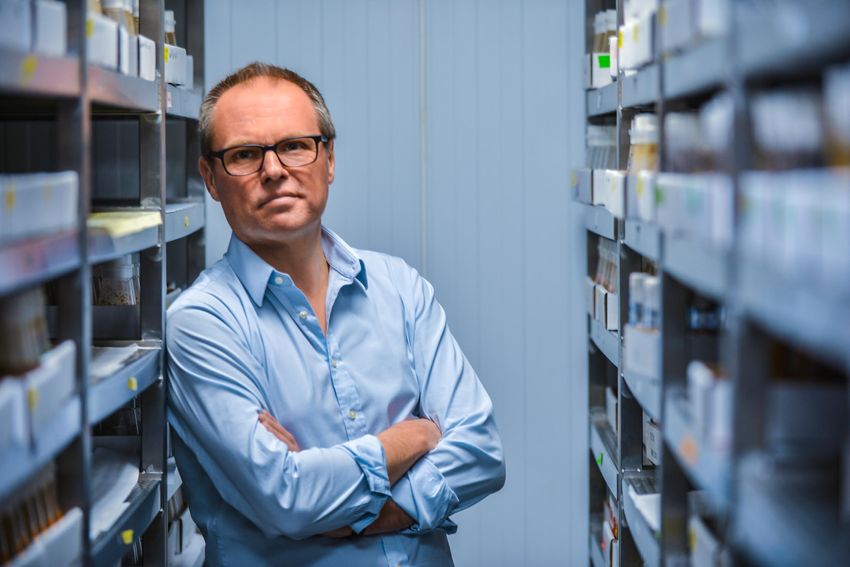There are many hypotheses for why animals need sleep, but scientists struggled to find solid evidence—until now.
Scientists have long struggled to pinpoint a reason for why animals need sleep. They’ve put forward many hypotheses, including the need for metabolic repair, memory consolidation, and immune system boosting, but these largely relied on observed correlations.
Recently, researchers discovered that buildup of toxic molecules in the mitochondria could be the answer they’ve been looking for.1 Gero Miesenböck, a neuroscientist at the University of Oxford, and his colleagues showed that the extent of electron leakage from the electron transport chain in the mitochondria determined how much fruit flies slept. Their findings, published in Nature, suggest a mechanistic reason for why different animals, including humans, need sleep.
Van Savage, a theoretical biologist at the University of California Los Angeles, uses mathematical models to understand the functions of biological processes. He was not involved in the study.
Van Savage
“It’s landmark study for the function of sleep,” said Van Savage, a theoretical biologist at the University of California Los Angeles who was not involved in the study. “It’s like the smoking gun—a conclusive evidence—for why we need sleep.”
To generate energy, cells transport electrons from the Krebs cycle across four protein complexes within the inner mitochondrial membrane in a process known as cellular respiration. This electron flow establishes a proton gradient across the mitochondrial membrane, which ATP synthase can harness to make ATP. Once electrons finally reach cytochrome c oxidase (Complex IV), they combine with hydrogen protons and oxygen to form water. But sometimes, electrons can leak into the mitochondrial matrix before getting to the end of the transport chain. When this happens, electrons can reduce free oxygen to form reactive oxygen species, which are toxic to cells. Metabolically active cells, such as neurons, are especially prone to such leakage.
“The respiratory chain handles single, unpaired electrons, and if you do that in the presence of oxygen, you’re almost asking for an electron leak,” Miesenböck said. “Life wants to use respiration because the energy gains are so large, but it has to somehow deal with the electron leak, and one way to deal with it is sleep. We think that’s the big trade-off that’s at the heart of all of it.”

Gero Miesenböck, a neuroscientist at the University of Oxford, studies the relationship between sleep and mitochondrial metabolism. His work relies on cutting-edge technologies, such as optogenetics, which he co-pioneered.
Gero Miesenböck
Miesenböck’s team previously identified a group of sleep-regulating neurons in fruit fly brains, called the dorsal fan-shaped body neurons (dFBNs).2 A few years later, the researchers discovered that metabolic byproducts from the mitochondrial electron transport chain regulate the activity of these neurons, establishing a direct link between sleep and the mitochondria for the first time.3
Miesenböck and his colleagues wanted to identify the molecular players that underlie the need for sleep. So, in the present study, they performed single-cell transcriptomics on the brains of well-rested and sleep-deprived flies. They demonstrated that in dFBNs, sleep loss caused the flies to upregulate mRNA transcripts that encode components of the electron transport chain complexes, including ATP synthase. However, these changes were undetectable in the combined analysis of other cells in the brain, confirming the importance of dFBNs in sleep regulation.
Next, to understand how cellular respiration regulates sleep, Miesenböck and his colleagues manipulated electron transport in opposite directions. First, the researchers overexpressed proteins that could dissipate the ATP-generating proton gradient in fly dFBNs. By increasing the demand for metabolically generated electrons, this reduced electron leakage. As a result, the flies slept less. Conversely, the researchers mimicked the increase in mitochondrial electron leakage by outsourcing ATP synthesis via the expression of an archaeal proton pump. This manipulation made electrons from the Krebs cycle redundant, and it increased the time that flies spent asleep.
“One obvious question to ask is whether the same thing is also happening in the mammalian brain,” Miesenböck said. “I would think so, but formally, it needs to be proven.”
Savage said, “This study gives strong evidence that the primary driving force of sleep is to counteract metabolism, but it doesn’t mean that some other functions, like memory consolidation or immune system boosting, haven’t piggybacked on top.”

